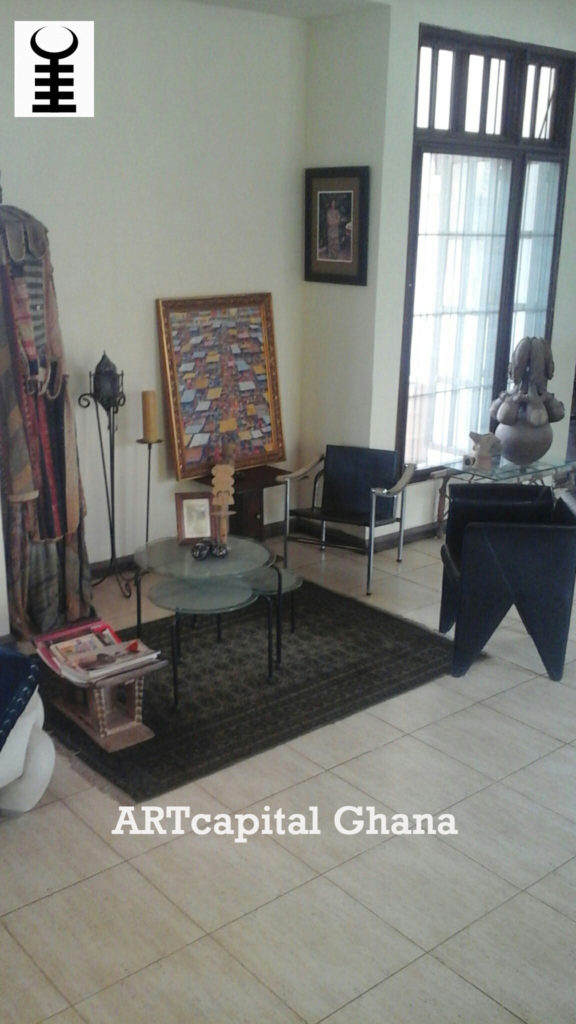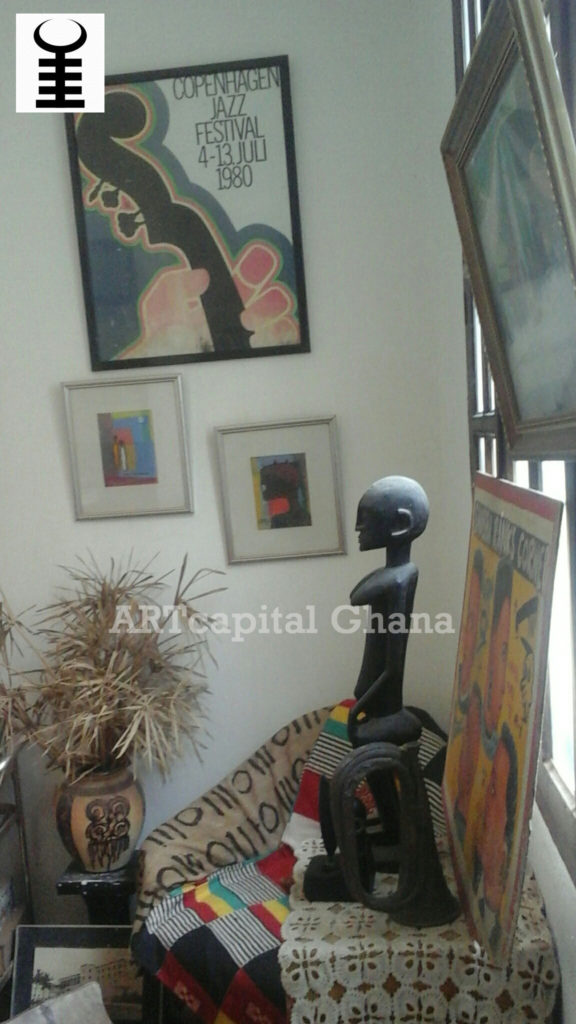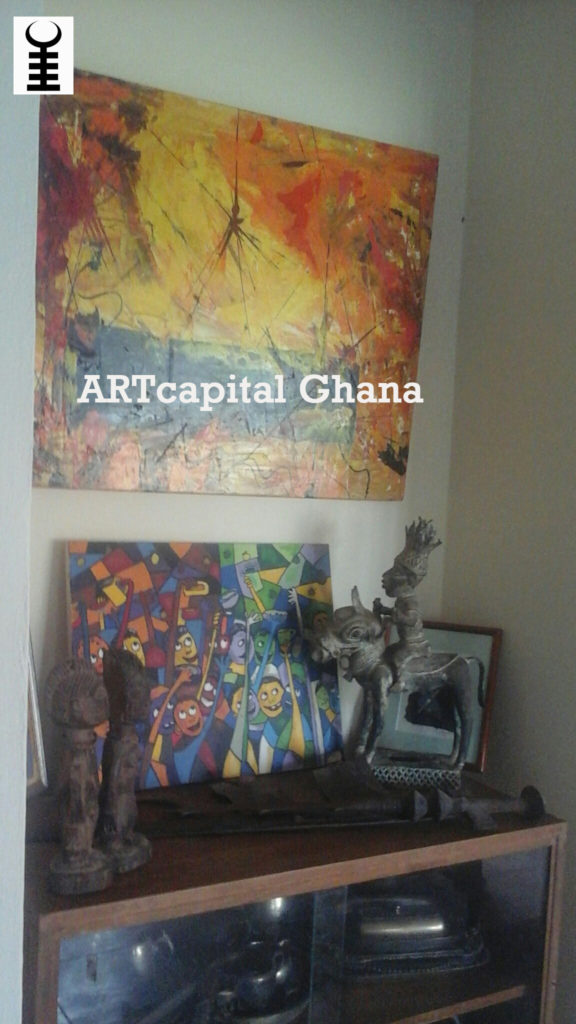By Nii B. Andrews
For decades, a number of suave collectors have always displayed their classic African art pieces alongside contemporary art (from Africa and beyond) and modern furniture.

This approach leads to eclectic interiors that open up the field of contemporary African art to novel perspectives and a new cohort of potential clients.

There is a need to move beyond the polished, stratified exhibition models of stark white boxes; there is a need to mix things up with imagination and savoir faire.
People need to see the art in relaxed, aesthetically empowering and aspirational settings that they can readily relate to.

It is even much better when the art is accompanied with great conversation, good wine, excellent whisky; or fine tea, coffee or chocolate; the modal changes of a crack Miles Davis quintet- or John Coltrane or Don Cherry – all amidst the alluring aroma of premium sandalwood incense.
This juxtaposition of several forms of creativity refreshes our individual gazes as new light is shed and new perspectives are gained, as hermeneutics is pursued.

The art pieces acquire a new life for obviously, classic African art is not a static entity- for the (invariably unnamed) artists influenced each other and certainly incorporated elements from other cultures that were accessible.
There is almost certainly a history to their forms and better educated persons, especially those of African descent, must endeavor to know, understand and appreciate this.

Intuitively, it will help us in our development by assisting us in solving existential problems.
But surely, this does not include the subjective and jaundiced view of the modern day African charismatic that the classic African sculptures are inhabited by malevolent spirits and therefore should not be countenanced.
You heard?

In short, displaying classic African art with contemporary African art provides for a synergy that gives both genres a further audacious edge with an added freshness.
All told, this strategy provides an impetus for us to appreciate the history of human contemplation and representation; and possibly to obtain a more accurate understanding of the human condition.



